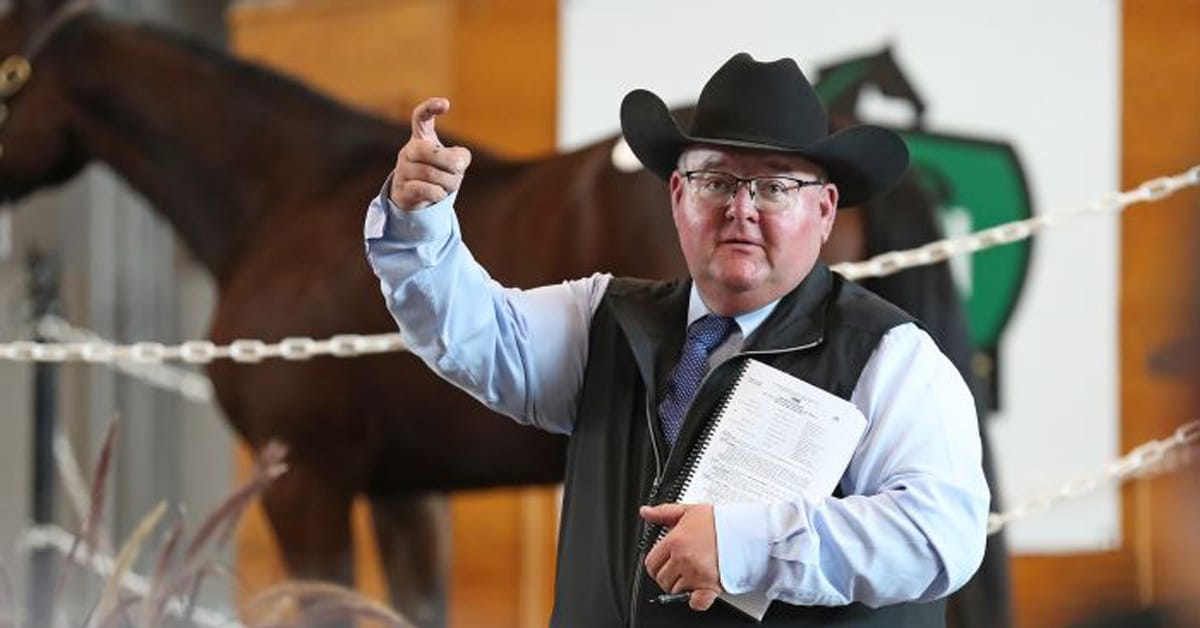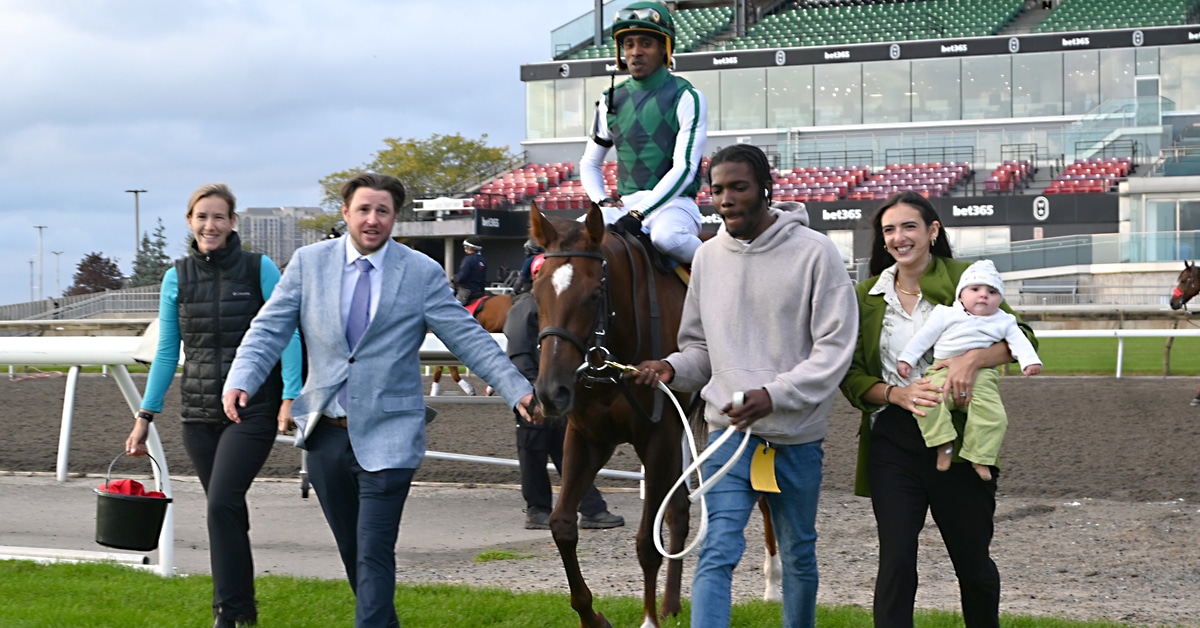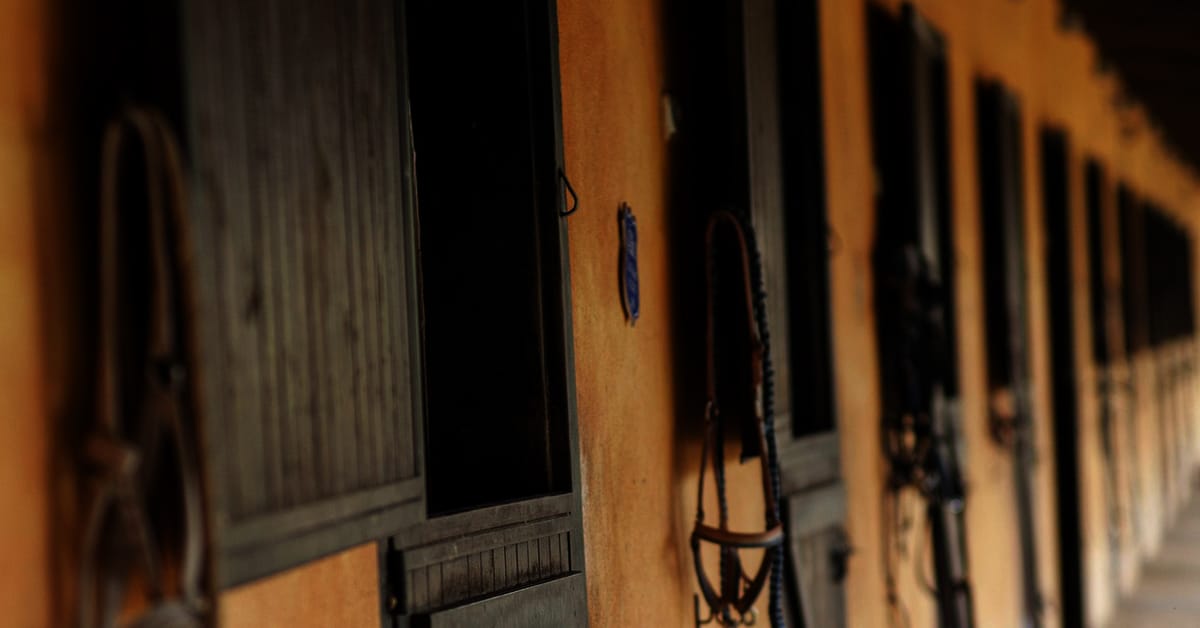The doors swing open from the jock’s room as the horses make their way around the paddock bend at Woodbine Racetrack. Each rider momentarily pauses, watching their respective mount either walk by, two-step, or does something more exciting as their groom tightens their hold on the shank.
Quietly stationed on the other side of the rail is Daren Gomez. Forearms pressed on the green rail, leaning into the paddock, Gomez gazes over to each rider as they climb aboard their horse and head out towards the Rexdale track.
“If I can help somebody, truly help them, then I’ve done my job. Whether it’s a jockey that’s having a hard time, or gets hurt, or lost a big customer and doesn’t know how to approach it,” said Gomez.

Daren Gomez.
Daren Gomez is the newly-appointed executive director of the Jockeys’ Benefit Association of Canada (JBAC). In previous years, this role has been occupied by the likes of former jockeys Irwin Dreidger and Robert King Jr.
Although he wasn’t a jockey like some of his predecessors, Gomez has been deeply involved in the industry for as long as he can remember.
“I don’t even know where to start. My first recollection of Woodbine, I was probably six years old riding Chappy’s [Carl Chapman’s] pony. Every summer and weekend that I could spend with the horses I did. My dad trained and was also an agent. My uncle, Avelino Gomez rode. My cousin, he’s retired now, but he was a great horseman, Victor Ramos. I just basically grew up there. I worked in the mutuels to help myself fund money for university.”
The son of Jesus ‘Miki’ Gomez and nephew to Canadian and U.S. Hall of Fame jockey Avelino Gomez, Daren has occupied several roles in the industry. In the late ’80s he worked as a groom for Trevor Swan and then for Sue Leslie in the ’90s, before stepping foot into mutuels, selling tickets, working in the money room, and doing the alpha (tote) boards.
Fast-forward to the present day and Daren finds himself advocating for all the unsung riders of the sport across Canada. Daren currently represents over 100 jockeys on the circuit. He admits this year’s circuit has been affected by the pandemic.
“I think it’s down a little bit. I think it would be closer to the 120 mark because COVID cut some racing, so we didn’t get a bunch of our regular guys in Western Canada that come from places like Fonner and Turf Paradise because it was hard to cross the border. The overall number is down a bit, but I’m sure it will bounce back to normal once we have a freer border.”
The Jockey Guild
The JBAC is a non-profit corporation that has been around for over 75 years.
“It’s the Jockeys’ Benefit Association of Canada, but they call it the guild. We are not necessarily a union, but we function similarly,” said Gomez.
The JBAC assists jockeys across Canada in various aspects of their riding careers. Their website, canadajockey.com outlines an exhaustive list of responsibilities which include providing authorization for anyone wanting to ride in Canada. The JBAC must also give consent to foreign riders wishing to establish themselves in Ontario or Western Canada. In the case of a riding infraction, the JBAC steps in to support a jockey at a Commission hearing. Additionally, they also provide support for jocks with personal and physical issues.
Another element of Daren’s job is negotiating insurance for injured jockeys or those who suffer a career-ending injury. Starting the job back in mid-September, Daren has been kept busy with the insurance side of things.
“I’ve been in touch with insurance companies because we are going to have to do some negotiations. We currently use three different insurance companies for different aspects: for career-ending, for disability, or for when a guy gets hurt. Unfortunately, we’ve had some fellas at Woodbine get hurt and some guys out West, so I’m doing their insurance claims for them, and there is oodles of paperwork.”
While insurance negotiations remain at the forefront of his job duties, Daren has also been negotiating jockey fees.
Currently, the mount fee for a Canadian-based jockey can be anywhere from $46 – $100. The fee will increase slightly as the purse increases, but the starting point leaves a rider with very little bread-and-butter to bring home, especially if they are only riding in lower purse races.
“If you run last in a bottom race, you get $46. It’s just not doable anymore. We will call it $50 for easy math. Of that $50 the jockey has to pay 25% to the agent, has to pay 20% to taxes, has to pay 5% to a valet and has to include the costs of his equipment, saddles, pants, and all that stuff. So generally, they are working on a 45-cent-on-a-dollar basis. That’s pretty low in 2021.”
Mount fees are one element of the jockey’s financial gain in race riding. The other and more significant part rests with earning a piece of the purse money. If a jockey finishes first, second, or third, they bank a percentage of the purse money. Ontario-based jockeys receive 10% if they win, between 3.3% and 4.8% for second place, and between 4.2% and 6.7% if they finish third. The percentage of purse money for place and show varies depending on the purse. In Western Canada, the percentage splits are 10% for first, second, and third-place finishers.
The jockey’s perspective
Barbadian jockey Chris Husbands, the leading rider at Fort Erie this season, agrees the mount fee rate should be raised for several reasons.
“We are risking our lives out there, and sometimes stewards give us fines or penalties for not riding out for third or fourth, but if you raise the stakes, you know you will get more competitive, and people will go for it more. At the end of the day, we have families to take care of; life is only getting harder and things are getting more expensive,” said Husbands, who rides at both Fort Erie and Woodbine.
On December 5, 2021, the last day of Woodbine’s meet, Husbands rode in six races, which included two allowance races, several claiming races, as well as the Grade 3 Valedictory Stakes. While it was not a winning day for the jock, Husbands earned a flat fee based on the purse structure for each race. In a starter optional claiming with a purse of $33,400 he finished seventh aboard Airy Fairy. Since he was unplaced, the jock only earned a flat fee of $99 before HST (13%). Later in the day, Husbands rode Shangassah to a ninth-place finish in the $150,000 Valedictory. He earned $100 before HST.
Don’t forget, Husbands still has to pay his agent 25% (approx. $326.54), 20% to taxes (approx. $261.23) as well as 5% to his valet (approx. $65.30). So, on closing day after riding nearly half the card, the jock only took home around $653.00.
Jockey Gary Boulanger has been riding at Woodbine for over two decades. The Canadian Hall of Fame jockey was clear-cut about his stance on the situation surrounding mount fees and percentage splits for purse money.
“We are at Woodbine, which is the biggest racetrack in Canada, the premiere meet of the country. And for whatever reason, they never re-negotiated our jock mount fees for thirty years, and all of Western Canada gets paid more by scale than we do. We are just trying to get us back to par with whatever everyone else in the industry is making. As far as a flat fee and even percentages for second and thirds, whereas out West, they get 10% across the board, and we get just a regular number based on a scale. In my opinion, we are not asking for anything that is not existing; we are just trying to get to the same level they are at some point.”

Melanie Pinto. (Norm Files photo)
Melanie Pinto, a multiple stakes-winning jockey, has been riding at the Fort since 2007. Pinto has been the leading rider at the meet in 2014, 2015, and 2019. She echoed a similar sentiment to Boulanger.
“What we are looking for is the industry standard. If you look at the base fee, not even just across the U.S. but even in other parts Canada where they have similar purses and amount of days to Fort Erie, like out west, they were getting significantly more than what we were getting,” said Pinto, who is on the board of directors for the Jockey Guild.
Currently, the base mount fee for jockeys at the border oval is $75. Pinto alluded to why the Fort’s base mount differs to Woodbine’s starting point.
“I think because there wasn’t going to be any negotiations made on account of the pandemic and everything. But we were severely underpaid at Fort Erie and it was kind of good faith we were going to have our minimum jock’s mount raised because it generally goes by purses, and where are all our purses are at a minimum, we don’t have $100,000 allowance races, whereas Woodbine you do get a $100 fee.”
It’s interesting to note that purse percentage, specifically the 10% of what a winning jockey takes home, can be affected by province-bred bonuses provided in certain races. One example of this situation happened in this year’s $1 million Ricoh Woodbine Mile, in which Ontario-bred Town Cruise captured the race with jockey Daisuke Fukumoto. The winner of the Mile receives $600,000. If the winner is also Ontario-bred, the horse’s owner will pocket a $120,000 bonus. Fukumoto banked 10% of $720,000 (rather than $600,000) of the winner’s share in that race because Town Cruise was bred in Ontario and eligible for that specific bonus.
Jockey fees south of the border
The standard jockeys fee in the US is 10% for winning, 5% for second, and 5% for third while in Canada the rate is 10% for winning and between 3.3% and 4.8% for 2nd and 4.2% and 6.7% for third.
In the U.S., the mount fee is also dependent on the purse structure. According to stats on Thoroughbred Owners of California (TOC)’s website, the mount fees can range from $63 to $135 (USD). The mount fee scale can also vary from state to state. For instance, over on the east coast at Colonial Downs in Virginia, the jockeys have seen an increase in mount fees in recent years. In 2019, the Jockeys’ Guild and the Virginia HBPA decided that the mount fee schedule would start with a minimum fee of $125, but there are only 21 days of racing in the state.
Heading back to California, as the purses go up, the mount fee for an unplaced rider increases as well. For example, a jockey riding a losing mount in a $10,000 race will earn $80 while a losing jockey in a $100,000 race will make $135. Woodbine jockeys also have a sliding scale earning a $53 mount fee for a race with a $10,000 purse, $83 for a $25,000 purse and $100 for races worth $40,000 and up.
Which economic model would Daren be inclined to take?
“If I had to take a model I would take California’s because they are set on a price and they do it like any other job. If inflation is five per cent, you get a five per cent increase. If inflation goes down five per cent, we are going back five per cent. So you don’t get left behind. You don’t get a big chunk of a raise, but you always get that increase ‒ I haven’t seen inflation go backwards, so you always get your four per cent, five per cent and everyone seems happy. Nobody has to cut out a big cheque, but nobody is getting left behind. Whether or not we can follow that, I don’t know because there a whole lot of governing bodies to horse racing in California that aren’t super similar to ours. But it’s a model.”
Who negotiates jockey fees?
As stated in section 9 (9.06) of the Alcohol and Gaming Commission of Ontario (AGCO) handbook, “the minimum riding fees paid to jockeys shall be as agreed by the Jockeys’ Benefit Association and the HBPA.”
The Horsemen’s Benevolent Protective Association of Ontario (HBPA) represents owners and trainers of thoroughbreds on the Canadian racing circuit. Part of their mission, as outlined on their website is to “provide a national voice for horsemen on matters of national policy and of national interest. Assist individual affiliates with particular problems. Promote the preservation and enhancement of live racing in North America.”
While jockey fees might not be of national interest, their livelihood is linked in larger part to the preservation of this sport.
Unfortunately, the discussions between the JBAC and the HBPA on jockey fees have been delayed due to the pandemic. However, Daren has been in contact with Sue Leslie in recent weeks. “I talked with the president of the HBPA, Sue Leslie. We’ve had correspondence this week (early December). I’m sure she has a board she talks to and I have a board on my side. Irwin is still very much involved and so is the retired jockey Larry Attard.”
What aspects of the jockey fees will be negotiated? While the main bone of contention is with the current flat fee, Gomez does mention other elements may be up for discussion at the negotiation table. “The winner’s share wouldn’t change. Basically mount money, the cost to getting on a horse and maybe some second and thirds that are up for grabs for negotiation.”

Chris Husbands at Fort Erie. (Hayley Morrison photo)
Asked whether negotiations are going in a positive direction, Gomez remains tight-lipped on the current state of affairs.
“Not super good going forward, but we haven’t regressed and we still have the whole winter. We still have some of next year. It’s been an ongoing thing because it was obviously difficult to negotiate anything through the pandemic but we are starting to live with it and things are opening up. It doesn’t have to start until everyone is in full flight.”
The HBPA was contacted for this story but did not comment about the current situation.
Meanwhile, Daren remains steadfast about negotiations. “I honestly believe there is a middle ground for both of us, where we get an extra piece of the pie but we don’t get the whole pie. Or, they can give up a piece without giving up the pie.”
Although he isn’t riding in their boots, he can still appreciate the struggle riders may go through, maybe not surprisingly, because his uncle Avelino Gomez played a memorable role in his life. One conversation comes to Daren’s mind, as he recalls Avelino telling him: “You know that horse I rode for so and so, do you think that’s my fault? No. I can’t get a horse beat 30 lengths, he just wasn’t there today. And consequently the one I won with by ten lengths, that’s more the horse than me.”
Daren pauses briefly before continuing. “He (Avelino) used to say, jocks get way more credit, but they take too much blame. Their biggest chore is not getting in the way of the horse.” Getting in the way of the horse while staying safe in the saddle is a fine balance that riders must strike in every race, regardless of the mount fee or the potential to make a percentage of the purse money.
Working in the industry for the better part of three decades, Daren understands the peaks and valleys involved in a jockey’s career. While working for the JBAC might be new territory, he doesn’t see this situation from a singular perspective but rather through a panoramic frame. A frame that involves all the players, not simply the riders.
“Hopefully, we can settle on something where everyone is happy. Because at the end of the day, there is not one part that we can do without. The owners put in their money, so without them we don’t have a game. The trainers and employees put in copious amounts of time looking after them (the horses), and the jockeys put their lives on the line. So to say one is better than the other really doesn’t sit well with me simply because we are not going forward without all of them.”
The Latest












